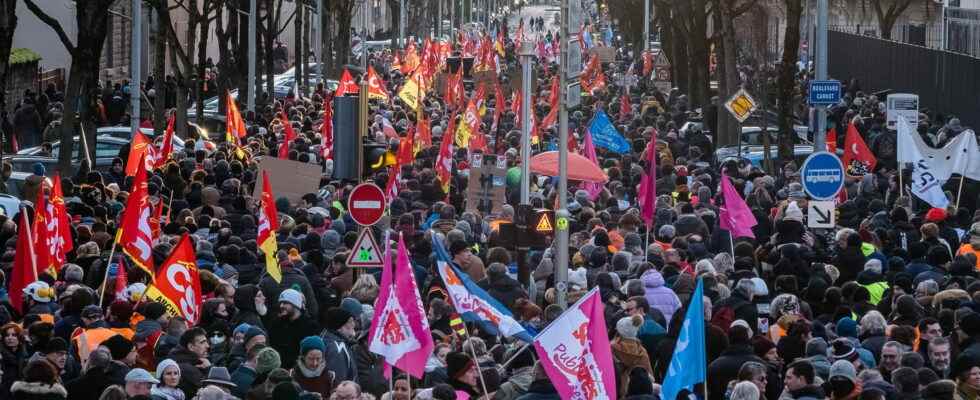The battle of numbers between the police and the unions is inherent in the demonstrations. The number of demonstrators differs depending on whether it is given by one or the other and the differences are sometimes colossal. What are the counting methods? Which is the most reliable?
How many demonstrators pounded the pavement on January 31, 2023? Will the mobilization be stronger than during the first strike against the pension reform? The question of the number of participants in demonstrations is always the one that comes up after a social movement, but often the answer is akin to a wide range between the estimates of the unions and those of the police. Illustration with the demonstrations of January 19 during which 2 million people mobilized according to the count of the inter-union against 1.12 million for the Ministry of the Interior. It’s a safe bet that the gap will be just as large for the strike on January 31, as evidenced by the estimates given city by city: in Marseille the unions counted 205,000 demonstrators against 40,000 for the police, in Toulouse the estimates go from 80,000 for the unions to 40,000 for the police, same observation in Nantes with 65,000 people according to the unions against 28,000 for the authorities. And the list is long.
The counts of the unions and the police for the day of January 31 however agree to say that the mobilization is more important in the streets. But one question remains: why such a gap between the two counts? Is it due to the calculation methods?
Line counting in unions
During strikes and demonstrations all the unions send some of their forces to the edges of the processions to count the demonstrators. All, or almost, proceed in the same way and use line counting. At these crossing points the trade unionists check the number of people on a line and then the number of lines that pass in front of them. A simple multiplication is then enough to obtain a result which is only an “estimate”. Example: if 1000 lines pass in front of the activists and 10 people stand on a line, the number of demonstrators is estimated at 10,000. At the CGT or FO, the method has been used for years.
Since the count is manual and carried out by humans, all the unions combine and compare their estimates to arrive at a new average figure for the number of demonstrators. This result can be somewhat “raised” by the unions seeking to give weight to their mobilization. Note that the unions are still waiting to have figures from the prefectures or the Ministry of the Interior before announcing their own count.
For the police, a similar but more reliable count?
Police forces also calculate the number of demonstrators manually without drones or aerial views and with a well-defined counting method and rules. “To do a balanced count, we take positions on high points and we establish lines”, explained the police to BFM TV in 2018. Each line is equivalent to ten people and the number of lines is counted at several points in the procession. At each passage, the police, who overlook the crowd of demonstrators by being placed in an apartment for example, activate a counter which takes care of the calculations. The data from the various counters is then used to obtain an average. A method not so far from that of the unions, but which “makes the thing very reliable” in the eyes of the police. Once the number of demonstrators has been stopped, it is up to the prefect or the ministry to announce it.
Which count is the most reliable?
The count of demonstrators by the police seems to have the advantage with the institutions. In April 2014, a commission of experts responsible for thinking about new counting techniques concluded in a report that “the police’s methods are good and are the only ones possible”, as reported by Le Figaro.
The fact that the count of police officers is done at height actually offers a better visual than the count made at ground level by the unions. The authorities can get a more accurate idea of the mobilization depending on whether the procession of demonstrators is compact or sparse. The police method also provides for a revision of the figures deemed more reliable than the calculation of the average of the averages made by the unions.
However, the police figures are not perfect either since they remain estimates and above all the mobilizations change their morphology with sometimes several organized processions or gatherings of demonstrators which are added in the streets adjacent to the route of the demonstration. Clashes that disrupt the procession and create crowds can also lead to errors in the calculations.
